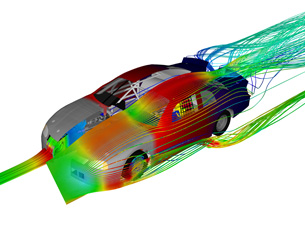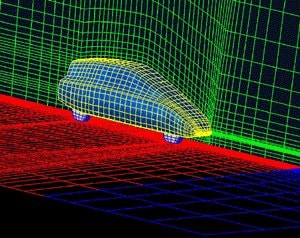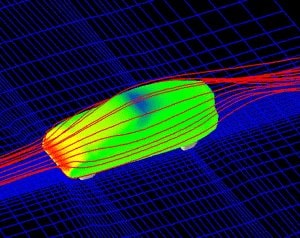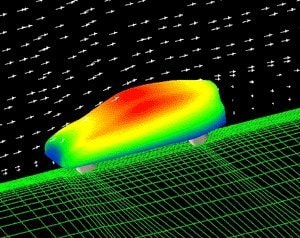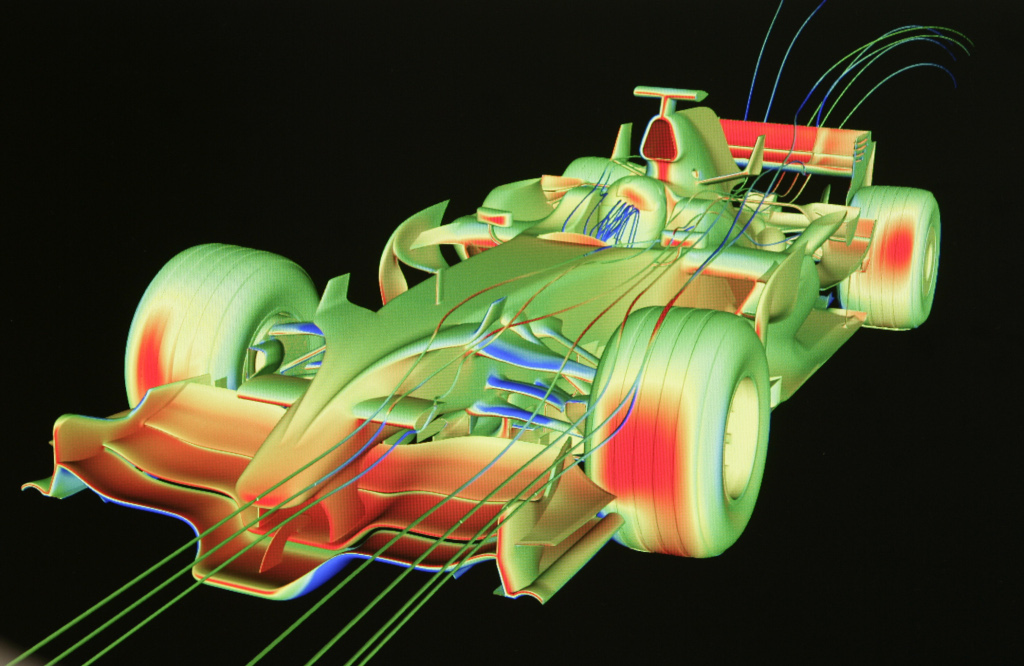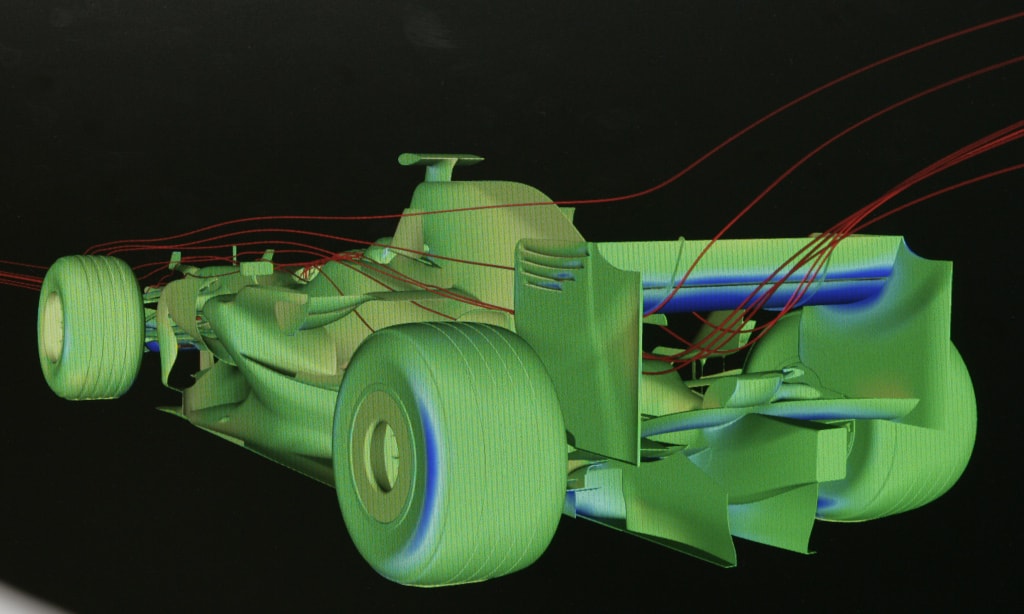You've probably heard the word "CFD" (Computational Fluid Dynamics) plenty of times when going through some technicalities inside the automotive world. In the article below, we'll try to explain how exactly CFD works, in an as humanly-understandable manner as possible, without getting stuck too much in the equations that come with it.
For starters, what exactly is CFD?
Computational Fluid Dynamics is a method by which one uses certain algorithms or other numerical formulas to analyze the fluids' flow. Needless to say, the millions of calculations required to simulate how certain fluids flow after the interaction with a clearly-shaped body are made by a supercomputer, via a well-designed software. Ergo, the more powerful the supercomputer, the more accurate the results of the CFD process.
In order to continue our argument, we must first make it very clear what exactly does the construction “fluid flow” refers to (from the automotive standpoint speaking, of course). It doesn't only concern the way air flows around a car at a certain point – no matter if in a straight line or when cornering – but also the process – chemical reaction – by which gasoline is burned inside the engine in order to create power (while also leading to pollution). That's why CFD technology does not only help the car makers improve their models' aerodynamic performances, translated into better fuel economy, but also powerplant manufacturers to limit CO2 emissions.
One important issue when it comes to CFD technology is that it's not 100% effective. Although the supercomputer can make hundreds of millions of calculations in order to get a more effective prediction on fluid flow, the final results can only be approximated for a number of reasons: limitation on the number of calculations (depending on the supercomputer's power), less accurate input data (depending on information from the wind tunnel) or scientific knowledge base.
Nevertheless, considering the high point technology has managed to reach nowadays, the present supercomputers can give you a close to 100% solution to a certain aerodynamic problem, or related to climate control, engine cooling or combustion engines.
What the software does, basically, is divide the geometric structure of the object (car, engine, etc) into a finite number of elements or cells (as shown above). The newly-created mesh can lead to less or more accurate results of the CFD, depending on the number of cells. The higher the number, the more accurate the results, as the software will be given more data to work with.
The next step is to create a second mesh, this time representing the volume occupied by the fluid. Its flow is, just as in the case of the object it comes in contact with, divided into as many cells as possible, in order to determine the exact behavior of the particles. What's important here is that the supercomputer will analyze each cell/element (call it how you wish) as an independent part. That's why the structure of both the defined surface and fluid flow must be divided into as many cells as possible, as each may influence the overall results in a decisive manner.
After that, the computer will set up a clear image on how exactly the fluid will come in contact with the initial surface or object, while also emphasizing the exact problems encountered by it in the process. Finally, the simulation is being given the go ahead, at which point the CFD software starts working on solutions to the aforementioned problems. Whatever issue might arise in the fluid flow process, it will be solved both as a self sustainable element and as a transitory state.
The final phase of the CFD refers to the analyzing of the results and, of course, the solution.
No doubt about it, the CFD systems in motorsports have reached the highest level of accuracy of all applications of the technology worldwide. And that's mainly the consequence of huge investments made in the hardware department. The supercomputers used by several Formula One teams have lead to a point in which CFD-based solutions are close to perfection when it comes to improving car's aerodynamic efficiency, downforce level, engine efficiency and brake cooling.
One example that stands above all is the Albert 2 supercomputer used by BMW Sauber at their Hinwil base in Switzerland. The aforementioned piece of machinery uses 1,024 Intel processor cores, has a total memory of 2,048 GB and a maximum power of 12,288 GigaFlops (approximately 12,288,000,000,000 calculations per second), with the necessary software being provided by German subsidiary of US-based Fluent.
As underlined by British magazine Autosport in a more close article of the Albert 2 supercomputer, its overall power per second is equivalent to “more than one million people multiplying two numbers every three seconds for an entire year.”
For starters, what exactly is CFD?
Computational Fluid Dynamics is a method by which one uses certain algorithms or other numerical formulas to analyze the fluids' flow. Needless to say, the millions of calculations required to simulate how certain fluids flow after the interaction with a clearly-shaped body are made by a supercomputer, via a well-designed software. Ergo, the more powerful the supercomputer, the more accurate the results of the CFD process.
In order to continue our argument, we must first make it very clear what exactly does the construction “fluid flow” refers to (from the automotive standpoint speaking, of course). It doesn't only concern the way air flows around a car at a certain point – no matter if in a straight line or when cornering – but also the process – chemical reaction – by which gasoline is burned inside the engine in order to create power (while also leading to pollution). That's why CFD technology does not only help the car makers improve their models' aerodynamic performances, translated into better fuel economy, but also powerplant manufacturers to limit CO2 emissions.
One important issue when it comes to CFD technology is that it's not 100% effective. Although the supercomputer can make hundreds of millions of calculations in order to get a more effective prediction on fluid flow, the final results can only be approximated for a number of reasons: limitation on the number of calculations (depending on the supercomputer's power), less accurate input data (depending on information from the wind tunnel) or scientific knowledge base.
Nevertheless, considering the high point technology has managed to reach nowadays, the present supercomputers can give you a close to 100% solution to a certain aerodynamic problem, or related to climate control, engine cooling or combustion engines.
What the software does, basically, is divide the geometric structure of the object (car, engine, etc) into a finite number of elements or cells (as shown above). The newly-created mesh can lead to less or more accurate results of the CFD, depending on the number of cells. The higher the number, the more accurate the results, as the software will be given more data to work with.
The next step is to create a second mesh, this time representing the volume occupied by the fluid. Its flow is, just as in the case of the object it comes in contact with, divided into as many cells as possible, in order to determine the exact behavior of the particles. What's important here is that the supercomputer will analyze each cell/element (call it how you wish) as an independent part. That's why the structure of both the defined surface and fluid flow must be divided into as many cells as possible, as each may influence the overall results in a decisive manner.
After that, the computer will set up a clear image on how exactly the fluid will come in contact with the initial surface or object, while also emphasizing the exact problems encountered by it in the process. Finally, the simulation is being given the go ahead, at which point the CFD software starts working on solutions to the aforementioned problems. Whatever issue might arise in the fluid flow process, it will be solved both as a self sustainable element and as a transitory state.
The final phase of the CFD refers to the analyzing of the results and, of course, the solution.
No doubt about it, the CFD systems in motorsports have reached the highest level of accuracy of all applications of the technology worldwide. And that's mainly the consequence of huge investments made in the hardware department. The supercomputers used by several Formula One teams have lead to a point in which CFD-based solutions are close to perfection when it comes to improving car's aerodynamic efficiency, downforce level, engine efficiency and brake cooling.
One example that stands above all is the Albert 2 supercomputer used by BMW Sauber at their Hinwil base in Switzerland. The aforementioned piece of machinery uses 1,024 Intel processor cores, has a total memory of 2,048 GB and a maximum power of 12,288 GigaFlops (approximately 12,288,000,000,000 calculations per second), with the necessary software being provided by German subsidiary of US-based Fluent.
As underlined by British magazine Autosport in a more close article of the Albert 2 supercomputer, its overall power per second is equivalent to “more than one million people multiplying two numbers every three seconds for an entire year.”
